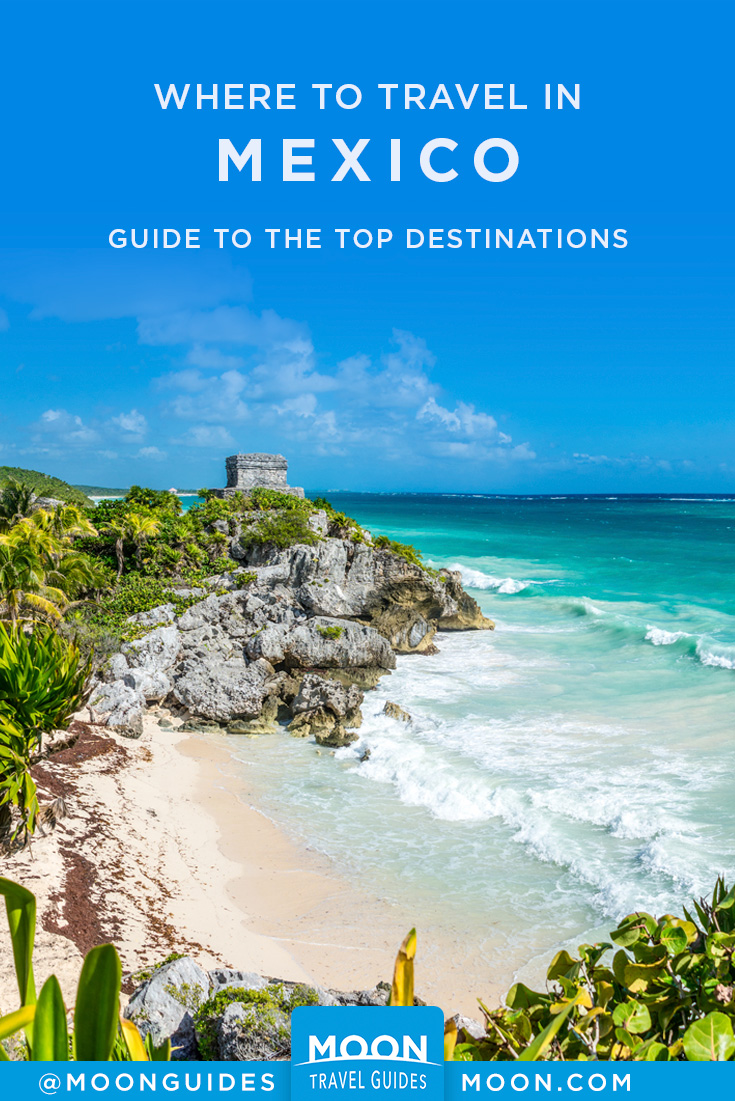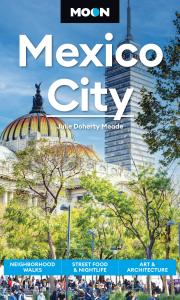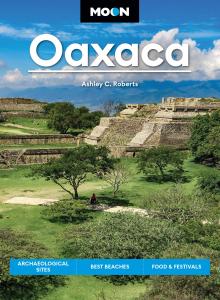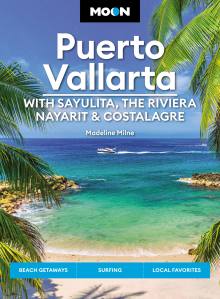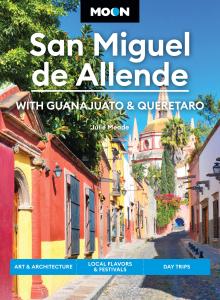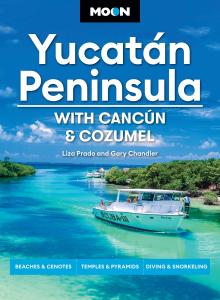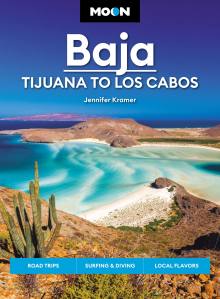An Expert Guide to the Top Destinations in Mexico
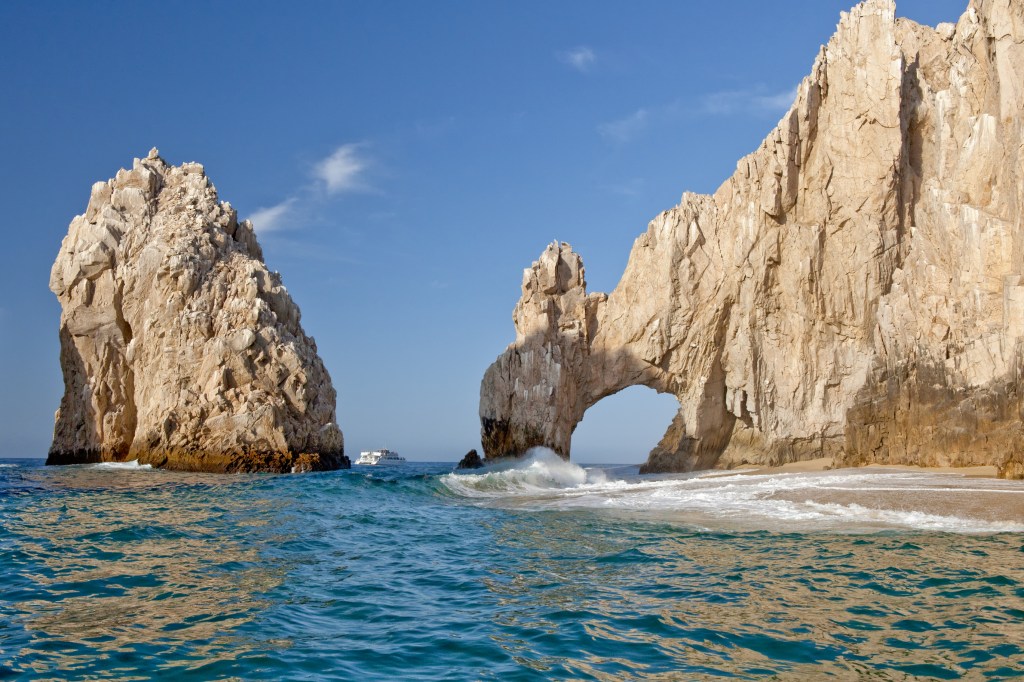
A welcoming country with a stunning diversity of cultures, cuisines, and landscapes, Mexico is a place worth visiting over and over again. I’ve traveled the country from its northernmost border in Tijuana to its southern limit in Punta Cometa, and there are still places I long to go or dream of seeing again.
From beachfront yoga retreats to avant-garde photography exhibitions, international performing-arts festivals to breathtaking wilderness, Mexico is a fascinating place with a seemingly endless variety of experiences to offer. The constant is the warmth of its people and culture—and, of course, its enviable weather—near-perfect year round in most of the country.
Read on for a primer on where to go in Mexico.
Jump ahead to any destination here:
- Mexico City
- Oaxaca
- The Oaxacan Coast
- Puerto Vallarta
- Punta Mita, Sayulita, and the Riviera Nayarit
- San Miguel de Allende
- Cancún and Isla Mujeres
- Tulum and the Riviera Maya
- Mérida
- Los Cabos
Mexico City
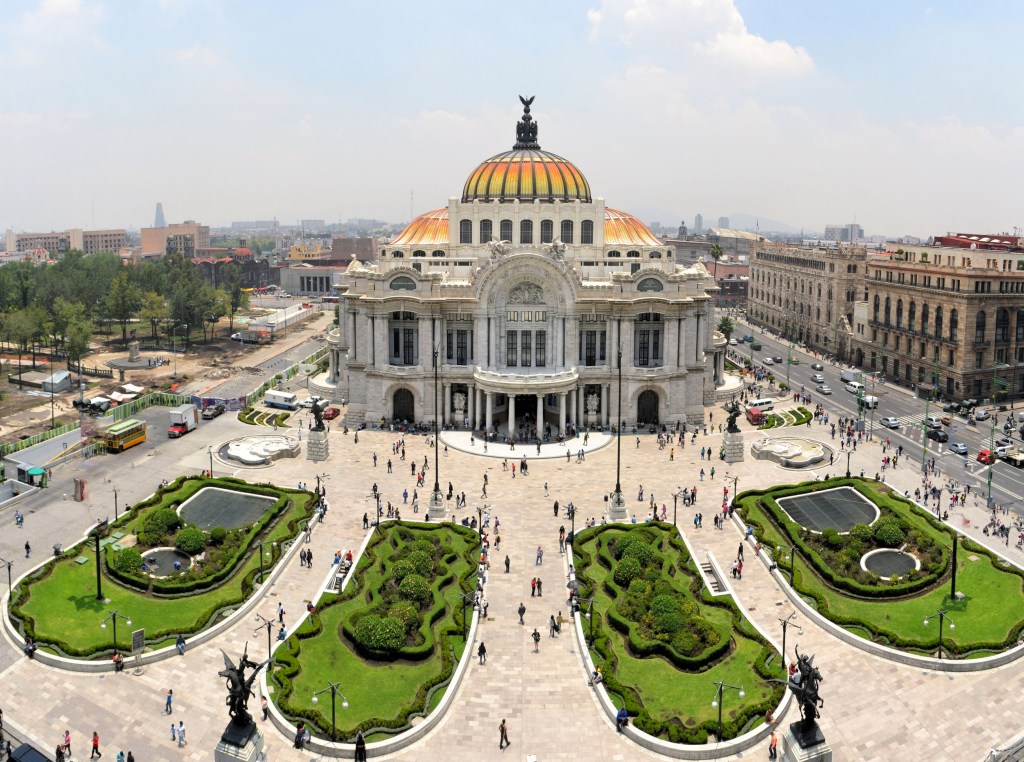
Mexico’s capital is a city like no other—a sprawling, vibrant metropolis of 20-plus-million people that embodies the splendor and chaos of modern life, as well as the richness of Mexico’s culture and history. With a multitude of excellent museums, contemporary galleries, and critically beloved restaurants opening throughout the city, Mexico City’s star is rising quickly.
Best for: Adventurers, city types, artists, writers, couples, history buffs, and food lovers.
Belly button of the world: Mexico City’s central square, the Zócalo, has been the heart of the metropolis since the founding of the Mexica city of Tenochtitlan in 1325. After Tenochtitlán’s destruction by Hernán Cortés’s army, it became the center of the capital of New Spain in 1521.
Jewel of the city: The National Anthropology Museum holds a breathtaking collection of pre-Columbian artifacts and art from cultures across Mexico. The rooms dedicated to the city of Tenochtitlan and the Valle of Mexico (where modern-day Mexico City was founded) are particularly impressive.
What to eat: From upscale seafood restaurants to hole-in-the-wall taco shops, Mexico City’s vibrant food scene spans neighborhoods and milieus. You’ll find outstanding eats across the city, at every price point.
That said: Tacos are king in the capital. Try El Huequito in the centro histórico or Orinoco in the Roma for tacos al pastor, “Los Tacos del Guero” (officially Taqueria Hola) in the Condesa for tacos de guisado, Gracias Madre in the Roma for vegan tacos on the street, or Pujol in Polanco for a fine-dining rendition of tacos.
Oaxaca
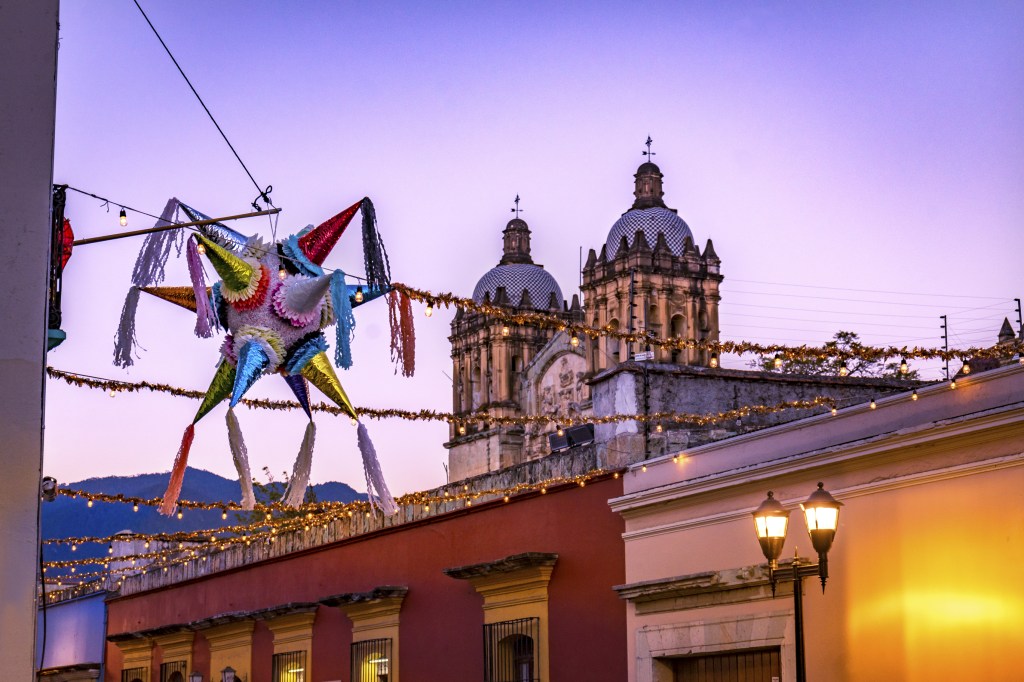
With its rich cultural traditions, mystical Zapotec ruins, and majestic colonial-era centro histórico, the city of Oaxaca is one of the most magical places in Mexico. It is also a top stop for food lovers: Oaxaca’s famous cuisine is among the most distinctive and delicious in Mexico.
Best for: Culture lovers, foodies, students, artists, activists, and families.
The spirit of the place: Fiery, smoky, and potent, Oaxacan mezcal is generally considered the best in Mexico.
Best bar snack: Fried grasshoppers are a salty complement to a shot of mezcal or a cerveza.
Best late-night nosh: You can stop in till four o’clock in the morning at Tlayudas Los Libres, a famous little eatery on a street of the same name, which specializes in crunchy tlayudas (giant corn tortillas filled with beans and cheese) prepared on an open fire.
Market finds: The traditional markets in Oaxaca are a great place to eat and shop. Pick up tamales wrapped in banana leaf, fresh cheese, or a mug of chocolate caliente (made with water rather than milk, as is traditional in Oaxaca). Or try tejate, an unusual cold beverage made from chocolate, maize, the seed of the mamey, and sugar. In the market, it’s typically served in a hollowed-out gourd.
Off-the-beaten-path day trip: Visit the lovely Centro de las Artes de San Agustín, a contemporary art center located in a turn-of-the-20th-century textile factory, in the small town of San Agustín Etla.
The Oaxacan Coast
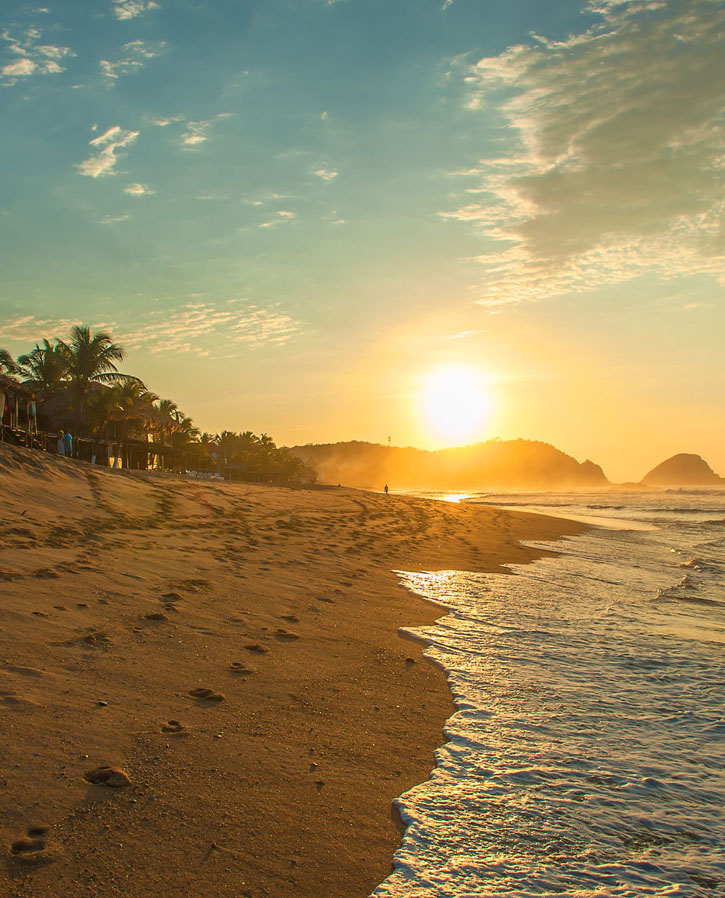
Take a bus (or a quick flight) over the Sierra Madre to the bohemian beach towns along the Pacific coast in Oaxaca state, including the hippie haven of Zipolite, the surfer paradise of Puerto Escondido, and quiet fishing village of Puerto Ángel. Further south, Huatulco is the area’s most upscale option, though it remains much more laid-back and accessibly priced than Mexico’s most famous resort towns.
Best for: Hippies, beach bums, and backpackers.
Get there fast: In 2024, a brand-new toll highway opened between the city of Oaxaca to Puerto Escondido on the coast, reducing travel time to less than 3 hours.
Turtle love: Many sea turtles come to nest on the beach at Mazunte, where the local Centro Mexicano de la Tortuga works to promote the turtles’ well-being and safety.
A touch of chic: Stylish Hotel Escondido, a design-centric beach hotel, run by chic Grupo Habita, opened in Puerto Escondido in late 2013.
Puerto Vallarta
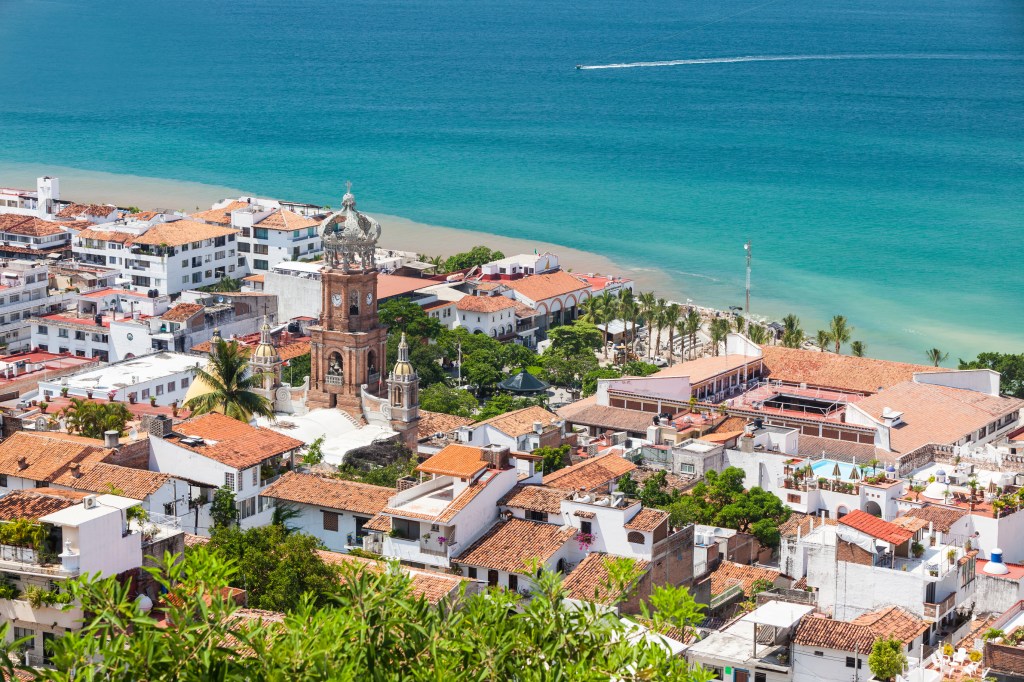
The Pacific Coast’s most romantic resort town is more than high-rise hotels and all-inclusive getaways. For thoroughly Mexican charm, head to Old Vallarta, where cobbled streets are flanked by Mexican restaurants, and family-style hotels line the beach.
Best for: Families, art lovers, spring breakers, and honeymooners.
Whale of a time: Marine mammals love the tranquil waters of the Bay of Banderas, and dolphins visit Puerto Vallarta throughout the year. From November to April, numerous companies offer whale-watching tours during the humpback migration off the coast.
Beat the crowds: Water taxis shuttle beachgoers to quieter coves and bays near Vallarta, like Yelapa and Las Ánimas.
Or join ’em: The multistory nightclubs along the Malecon are chapels to tequila shots and thumping dance music, where you can bump with the crowds till dawn, or simply enjoy a beer and the breeze with a view of the sea.
Sayulita and the Riviera Nayarit
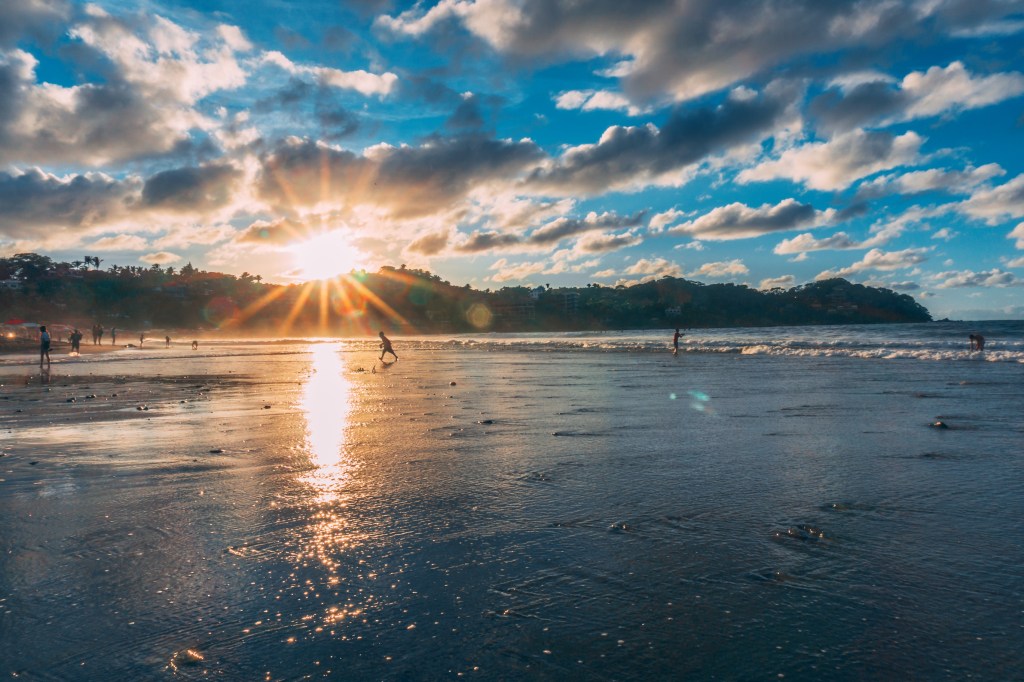
The Pacific beaches north of Puerto Vallarta, located along the Pacific Coast of Nayarit state, are quieter, more laid-back, and, in most cases, far cheaper than their famous neighbor to the south. Newly chic Punta Mita is the place to go for upscale luxury and get-away-from-it-all beaches. Come to Sayulita to surf, take yoga classes, and mingle with other vacationers in the low-key bars and cafes along the shore.
Best for: Surfers, yogis, beach bums, and families.
Best break: Sayulita is a popular destination for surfers, with its gently crashing waves suitable for beginners as well as more advanced surfers.
Upscale spot: The ultra-luxe St. Regis, the Four Seasons, and the W are located in Punta de Mita, the rugged point on the northern end of the Bahia de Banderas.
Low-key spot: North of Sayulita is San Francisco, unofficially known as San Pancho, a quiet little beach town with plenty of budget accommodations, a surf break, and a friendly community.
Fun fact: The state line between Jalisco (where Puerto Vallarta is located) and Nayarit also delineates the time zone; even though it’s just a short drive north up the coast, it’s is one hour earlier in Nayarit (Mountain Time) than in Puerto Vallarta (Central Time).
Newsletter Signup
By clicking ‘Sign Up,’ I acknowledge that I have read and agree to Hachette Book Group’s Privacy Policy and Terms of Use
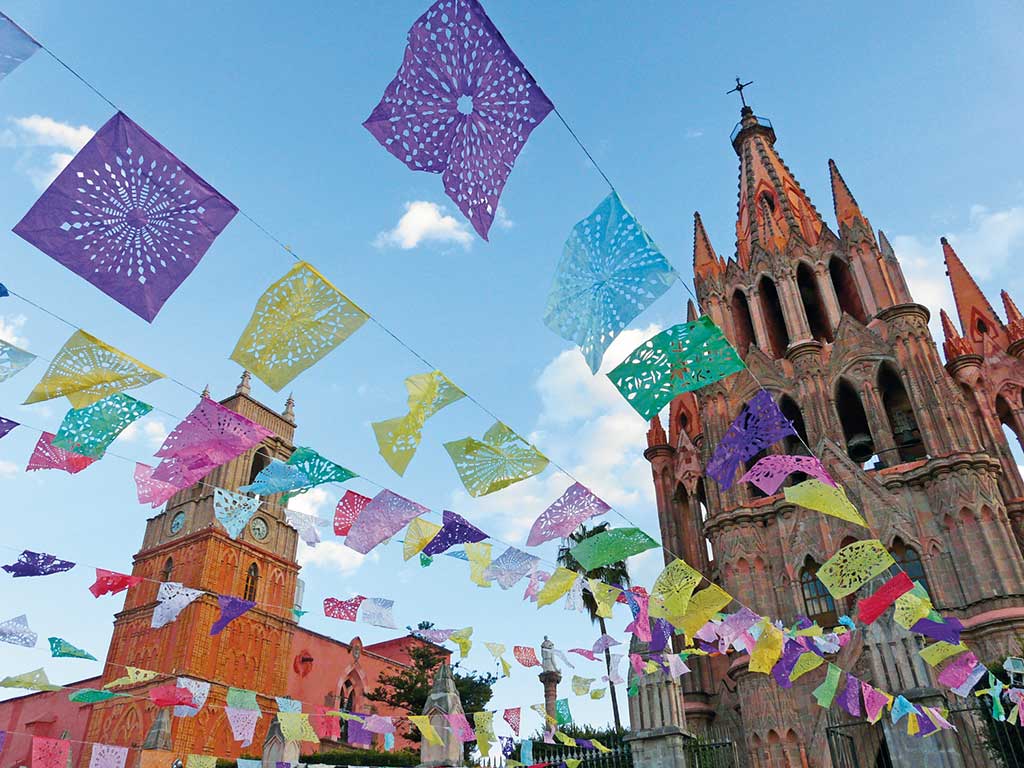
San Miguel de Allende
A romantic colonial-era pueblo in the Mexican highlands, San Miguel de Allende has grown more sophisticated in the past decade, with stylish small hotels, creative fine-dining restaurants, and concept boutiques cropping up across town. Even so, this beautiful little town retains its quirky charm, its signature warmth and friendliness, and its unique beauty—San Miguel’s blend of earthy ochre- and rust-colored buildings, sandstone chapels, weathered fountains, flowering trees, and soft pink sunlight is a feast for the eyes.
Best for: Artists, art students, cultural travelers, first-time visitors to Mexico, couples, solo travelers, and retirees.
Iconic sight: The Parroquía de San Miguel Arcángel—a neo-gothic, pink-sandstone church, right in the center of town—is one of the most unusual landmarks in Mexico, and a symbol of San Miguel de Allende.
San Mike: Since the 1940s, San Miguel de Allende has been home to a sizable American and Canadian expatriate community, attracting writers, artists, and bohemian types with its beautiful light and easygoing atmosphere. It’s also a popular place to retire.
Dive bar, bar none: With cheap beer and occasional art exhibitions, La Cucaracha is a San Miguel institution and one of the coolest low-key cantinas in Mexico.
Quixotic attraction: Every October, the city of Guanajuato, near San Miguel, hosts the two-week-long Festival Internacional Cervantino, Mexico’s largest and most prestigious arts festival, with performers from across the globe coming to the city’s many historic theaters and outdoor plazas.
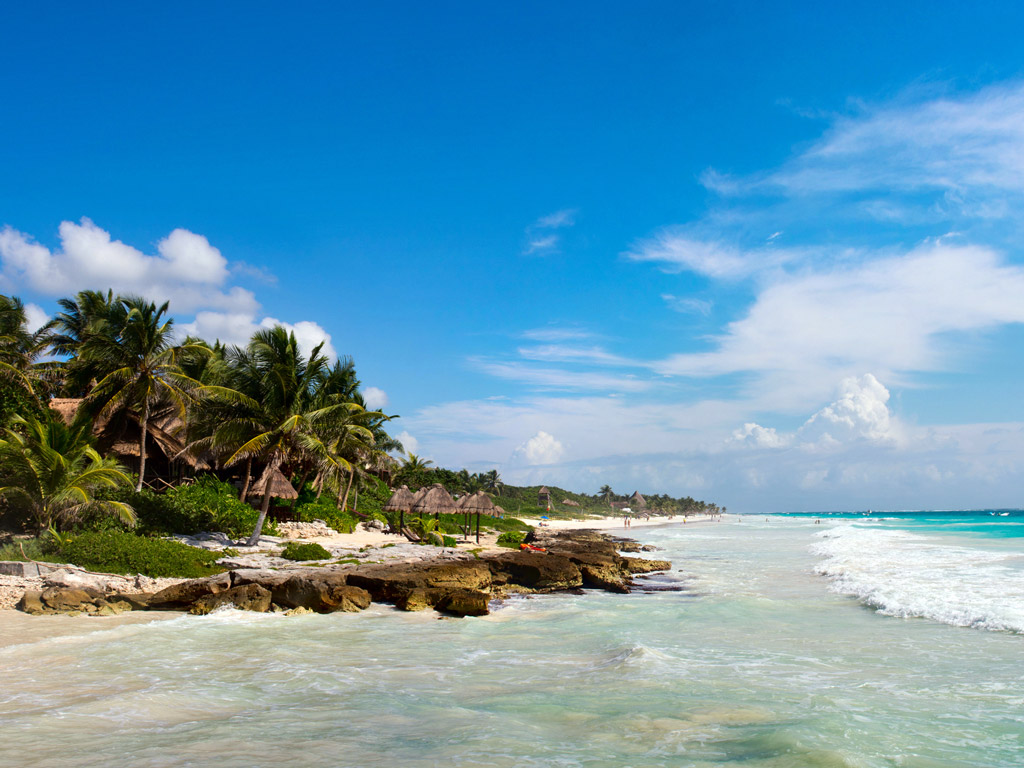
Cancún and Isla Mujeres
A glitzy resort town located on a spectacular stretch of coastline, Cancún is known for its all-inclusive resorts and multistory nightclubs, which seem to multiply with every passing year. Resorts aside, it is a place of unparalleled natural beauty, with a shimmering turquoise sea and powdery white sand, fringed by emerald mangrove forests. A quick ferry ride from Cancún, the teensy island of Isla Mujeres was, until recently, home to a small fishing community. Thanks to its picturesque beaches and proximity to Cancún, the island is today a popular destination for day trips from the mainland; however, it’s also an excellent place to spend your holiday, with a pleasingly laid-back atmosphere and lower prices than its famous neighbor.
Best for: Beach bums, families, adventure sport enthusiasts, and spring breakers.
Rainy day activity: Opened in 2012, the interesting Museo Maya de Cancún includes a small ruin site in addition to its collection of Maya art and artifacts.
Most unusual gallery: Grab your snorkel gear to explore the environmentally friendly, PH-neutral sculptures of the Museo Subacuático de Arte or the Subaquatic Museum of Art, which has three underwater locations in the Mexican Caribbean.
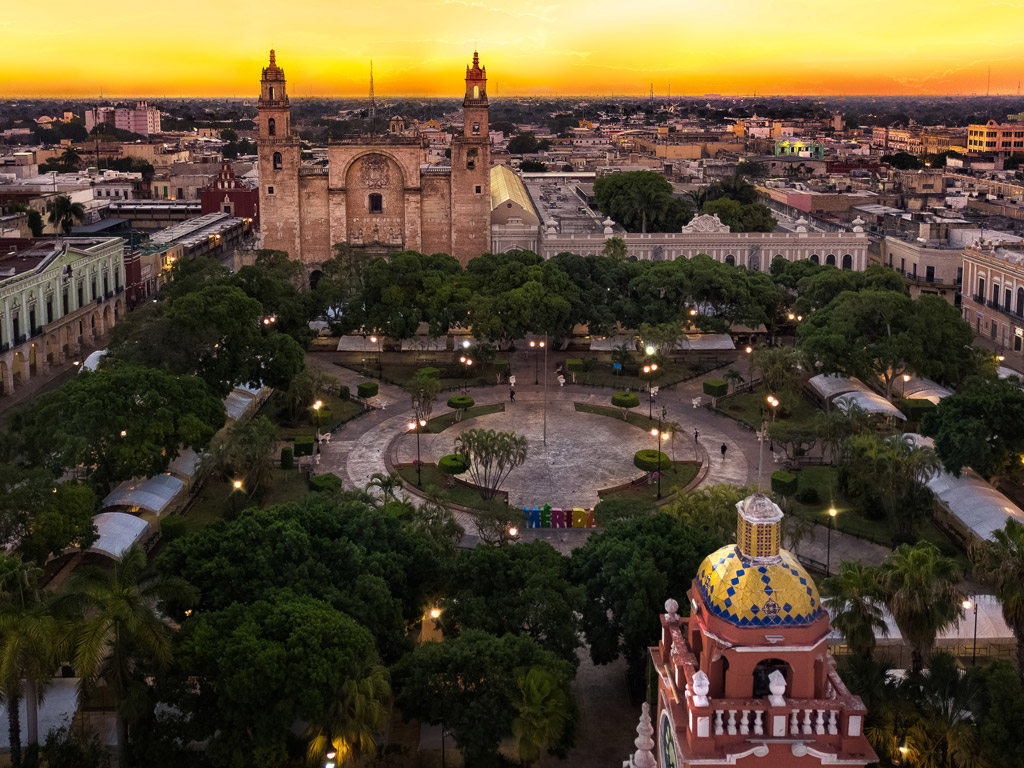
Mérida
The capital of the state of Yucatán, Mérida is a charming colonial-era city with a relaxed, unpretentious atmosphere, stellar local cuisine, and a balmy tropical climate. While there are plenty of boutique hotels and stylish restaurants around town, Mérida remains an attractively traditional and inexpensive destination, great for cultural travelers and those looking to learn more about local culture and Mayan history. In addition to strolling its historic streets and dining at its many excellent eateries, the city is good home base for exploring the greater region through day trips to the colonial-era town of Valladolid, the beach in Progreso, and the Maya cities of Uxmal or Chichén Itzá, among others.
Best for: Cultural travelers, families, solo travelers, and budget travelers.
Hot tip: The wonderfully flavorful and ultra-spicy chile habanero is the most popular accompaniment in traditional Yucatec food.
Chill out: Across the Yucatán peninsula, there are hundreds of deep natural sinkholes filled with freshwater, known as cenotes (say-no-tays). Taking a dip in these ultra-pure, spectacularly beautiful swimming holes are the most unique and effective way to cool off on a balmy, tropical afternoon.
New Connections: In 2024, the new Tren Maya—a passenger train that will eventually link points across the entire Yucatán peninsula, northern Chiapas, and Tabasco—opened to the public with 22 stations, including the Cancún airport, the colonial town of Valladolid, and Mérida.
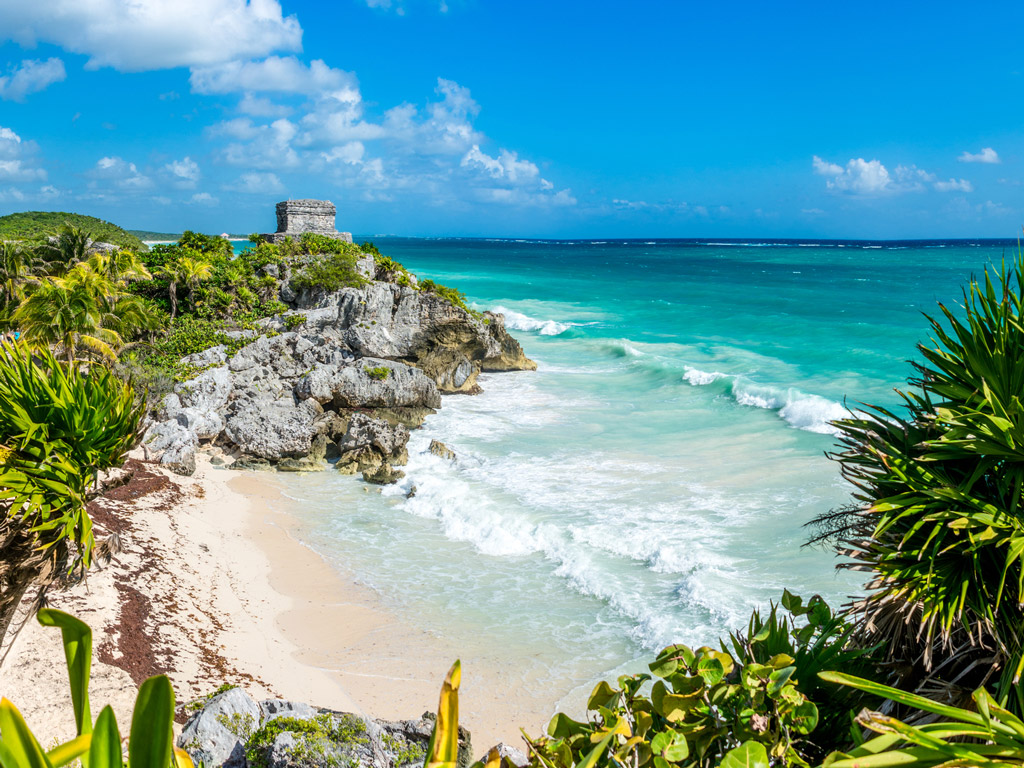
Tulum and the Riviera Maya
The gorgeous coastline south of Cancún, often referred to as the Riviera Maya, is known for its azure sea, white-sand beaches, and interesting local culture, with history that stretches back to the Mayan cultures of pre-Columbian Mexico. The area has grown rapidly in the past two decades, particularly around Playa del Carmen, where you can now find excellent restaurants, nightclubs, and resorts to rival Cancún’s. A little farther south is Tulum, a once-sleepy community that has become a locus for chefs, bohemians, and frazzled New Yorkers in search of picturesque wellness retreats.
Best for: Beach lovers, outdoor enthusiasts, scuba divers and snorkelers, and families.
Underwater sights: Surrounded by the Mesoamerican Barrier Reef, the island of Cozumel is a world-famous scuba-diving destination.
Best place to party: The full moon parties at the Papaya Playa Project are legendary.
Best place to sit still: The small beachfront town of Akumal, between Playa del Carmen and Tulum, retains a low-key, locals-only feeling.
Wild time: The Biosphere Sian Ka’an, an emerald expanse of bays, estuaries, and mangrove forests on the shores of the Caribbean Sea, is home to an astounding diversity of wildlife, including howler monkeys, toucans, iguanas, crocodiles, and more.
Sense of history: Busloads of tourists come to Chichen Itzá from Cancún every day, and with good reason. The ruin of this Mayan city is among the most splendid in Mesoamerica. You’ll find fewer crowds at Cobá, a stunning Mayan city east of Tulum, where visitors can rent bikes to explore the ruins.
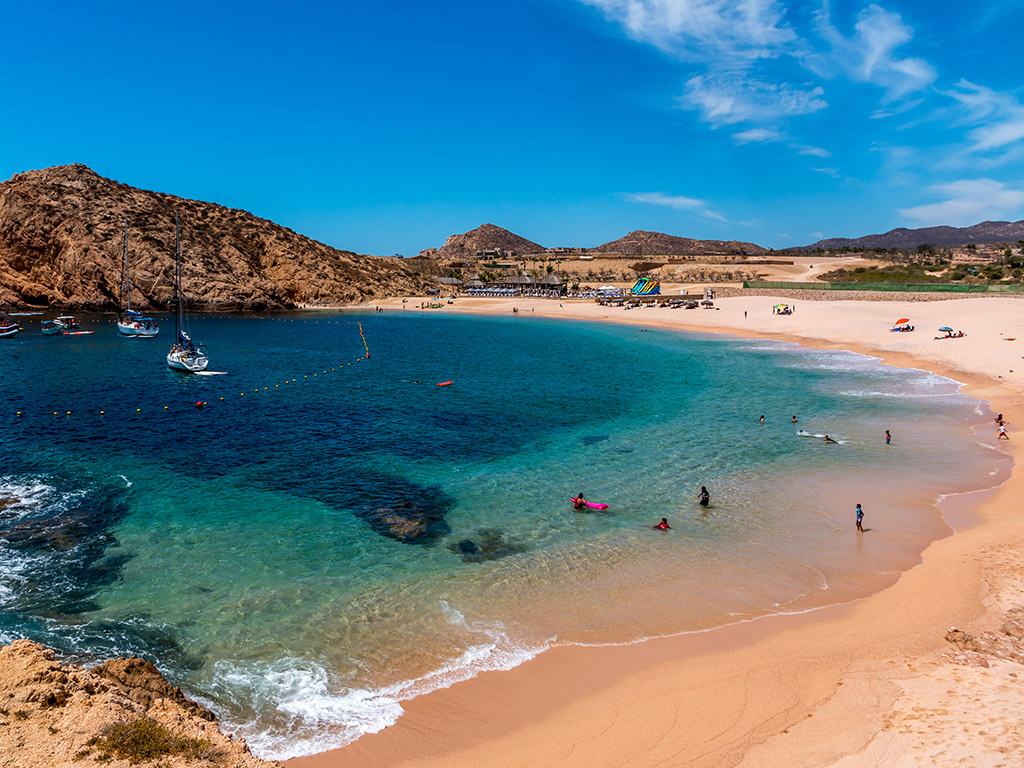
Los Cabos
Cabo San Lucas, on the tip of the Baja California peninsula, is perched right between the wild Pacific and the tranquil Sea of Cortez. It’s a stunning, upscale resort town, with some of the most dramatic beaches and poshest hotels in the country. San José del Cabo, Cabo San Lucas’s quieter, more inexpensive sister city, is just a 30-minute drive down the cape, and a great pick for travelers seeking a touch of traditional Mexican charm.
Suitable for: Newlyweds, couples, families, adventure-sport enthusiasts, and fisherman.
Best cheap snack: Fresh fish tacos, stuffed with deep-fried halibut and topped with shredded cabbage, lime juice, and salsa.
Take the kids: Enjoy a glass-bottomed boat ride to the famous arch off the point in Los Cabos, then spend a few hours lounging in the sun on the Playa del Amor.
Or rent a boat to see: Blue, sperm, humpback, minke, and gray whales, among others, which come to breed in the Sea of Cortes November to December.
If you miss whale-watching season: Take a kayaking tour of the island of Espiritu Santo, off the coast of La Paz, where the surrounding reefs are filled with a remarkably diversity of fish, birds, and marine mammals.
Skip the beach to visit: Flora Farm, an organic farm and restaurant, is a charming oasis in the desert.
Wild ocean, rugged desert mountains, and a wealth of culinary delights: Immerse yourself in this colorful peninsula with Moon Baja.
In addition to the destinations listed above, there are dozens more wonderful places to visit in Mexico today, like the wine-and-dining-centric Valle de Guadalupe in Baja California Norte and the magical alpine pueblo San Cristobal de las Casas in the southern state of Chiapas, in addition to other lesser-visited but nonetheless spectacular locations like Patzcuaro, Morelia, Puebla, the Copper Canyon, Real de Catorce, Mazatlan, Querétaro, Tepoztlan, Cuernavaca, or Zacatecas.
One thing is certain: The more you travel in Mexico, the more addictive it becomes.
Newsletter Signup
By clicking ‘Sign Up,’ I acknowledge that I have read and agree to Hachette Book Group’s Privacy Policy and Terms of Use
- Experience the city: Navigate by neighborhood or by activity with color-coded maps or follow self-guided walks through Mexico City's most interesting neighborhoods
- See the sights: Wander the ruins of Tenochtitlán at the Museo del Templo Mayor or visit Frida Kahlo's home. Explore the colorful Mercado de la Merced, admire Mexico City's sleek contemporary art museum, or venture into the past at the National Museum of Anthropology
- Get a taste of the city: Feast on tacos al pastor from a street stand or indulge in the foodie scene with a multicourse meal of creative ceviche and mole negro dishes. Sip tequila and snack on botanas with locals at a cantina, belly up to the bar at a taqueria, or try Oaxacan-style chiles rellenos at a beloved family-owned spot
- Bars and nightlife: Sip your way through a dazzling array of traditional dance halls, chic nightclubs, and hip mezcal hideaways
- Trusted advice: Julie Meade, who lived in Mexico for 10 years, shares her cultural and artistic expertise on her beloved city
- Itineraries and day trips: Head out to Cuernavaca, Puebla, or the ancient pyramid ruins of Teotihuacán or follow itineraries ranging from family-friendly tours to a lazy market Saturday, all accessible by bus, train, or public transit
- Full-color photos and detailed maps so you can explore on your own, plus an easy-to-read foldout map to use on the go
Exploring more of Mexico? Check out Moon Oaxaca or Moon Yucatán Peninsula.
About Moon Travel Guides: Moon was founded in 1973 to empower independent, active, and conscious travel. We prioritize local businesses, outdoor recreation, and traveling strategically and sustainably. Moon Travel Guides are written by local, expert authors with great stories to tell—and they can't wait to share their favorite places with you.
For more inspiration, follow @moonguides on social media.
Pin it for Later
